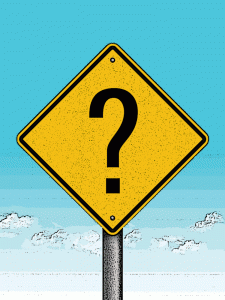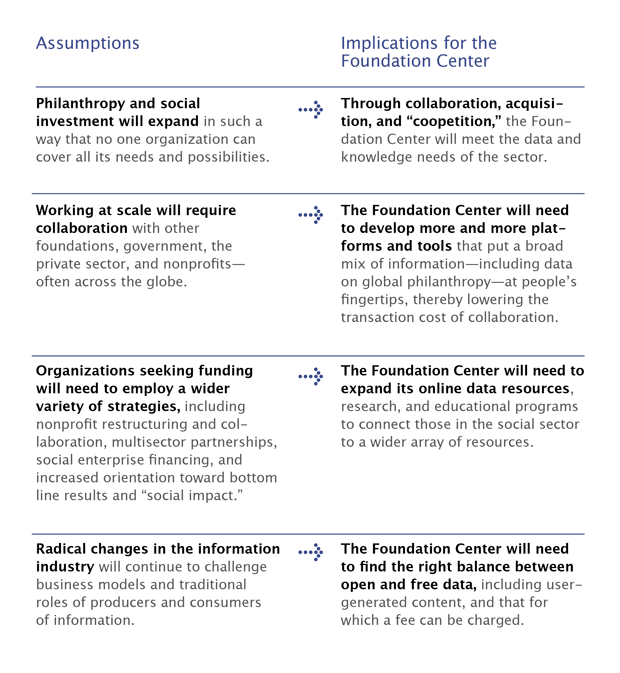The Foundation Center’s strategic plan is based on core assumptions about philanthropy and social change over the next decade. What can we assume about the future landscape for libraries?
 Some strategic plans start with environmental scans. Others start with goals. Few look out more than five years.
Some strategic plans start with environmental scans. Others start with goals. Few look out more than five years.
At the Foundation Center, planners started with their best guess at what the world would look like when their plans became reality in 10 years. They started with a set of core assumptions, informed ideas about the future of philanthropy and social change, and looked at what those assumptions could mean for the organization. Then they translated the implications into strategic priorities—the focus areas that ultimately lead to actionable goals and objectives. It’s a planning model that could work well for libraries as we try to assess how the world of information will evolve, how our community demographics and needs will change, and what all that will mean for future libraries.
The New York–based Foundation Center is “the leading source of information about philanthropy worldwide. Through data, analysis, and training, it connects people who want to change the world to the resources they need to succeed.” Those resources include an expansive database on grantmakers and their grants, along with research and training programs.
Foundation Center 2020, launched in 2011, is the center’s 10-year strategic plan. An ambitious, far-reaching plan, it’s a living document, presented as a set of interactive web pages that invites comments, questions, and conversation. It’s a perpetual work in progress.
The plan’s core assumptions about the future are what first caught my eye. Not just the assumptions themselves, but the way Foundation Center planners drew the expected implications of each assumption and, in turn, converted those implications into strategic priorities and specific goals that could be set, measured, and reevaluated as the assumptions, over time, became realities. Or not.
Of the dozen sets of assumptions and implications, here are a few abbreviated examples:
Source: Foundation Center 2020: “Key Assumptions”
How might we apply a similar process to libraries? What parallel assumptions could librarians make about the world? Could the demand for library-related services expand in such a way that the library alone might not be able to address all the needs and possibilities? Could meeting needs and exploring possibilities require new collaborations with other kinds of organizations—government, the private sector, and nonprofits, perhaps beyond our traditional physical territories? Do we need to employ a wider range of strategies when we look for funding? How will continuing changes in the information industry affect our roles and service models?
We know that our communities, our society, and the world of information will be different in 10 years, and when we plan our futures we’ll have to make assumptions. How might things be different? What will those changes mean for libraries as we set our goals and priorities?
What’s your best guess? Ω
Resources
Foundation Center 2020, the 10-year strategic plan for the Foundation Center.
It’s a planning model that could work well for libraries as we try to assess how the world of information will evolve, how our community demographics and needs will change, and what all that will mean for future libraries.


Comments are closed.